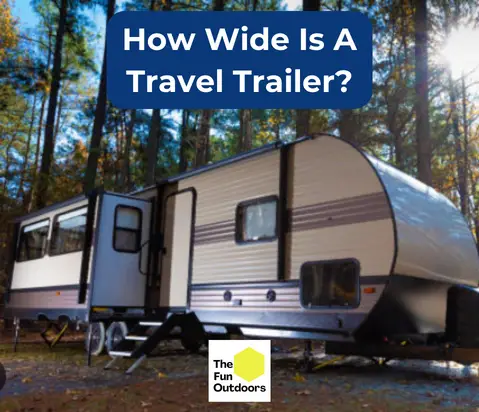Travel trailers are a popular choice for those who love to travel and explore the great outdoors. One of the most important factors to consider when purchasing a travel trailer is its width. The width of a travel trailer can affect how easy it is to tow, maneuver, and park, as well as how much space is available inside. So how wide is a travel trailer?
Most travel trailers are between 8 and 8.5 feet wide to stay within legal restrictions, but can be up to 10 feet wide in extreme cases. Compact travel trailers have a width of 6 or 7 feet. It’s important to consider the width of a travel trailer when selecting a model that will fit your needs and preferences.
Key Takeaways:
- The width of a travel trailer is usually 8 to 8.5 feet wide, but can vary depending on the make and model from a minimum of 7 feet to a maximum of 10 feet wide.
- The width of the trailer is important to consider when planning your trip, as it can affect your ability to navigate through narrow roads or park in certain areas.
- Some travel trailers have slide-outs that can increase the width when parked, providing more living space.
- It’s important to research the width of the travel trailer you’re interested in to ensure it meets your needs and preferences.
- We’ve provided 24 examples of travel trailer widths by category to give you an idea of the range of sizes available in the market.
How Wide Is A Travel Trailer?
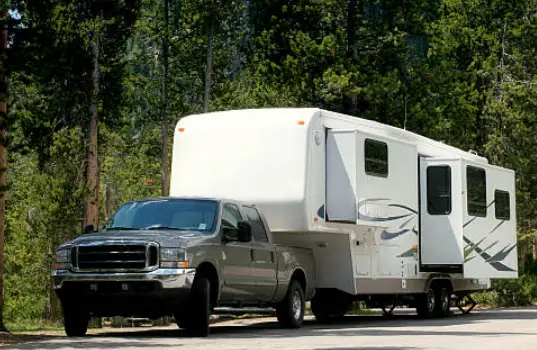
Standard Travel Trailer Width
Most travel trailers have a standard width of 8 feet or 96 inches. This width is enough to provide ample space for a comfortable living area, kitchen, bathroom, and bedroom. Some travel trailers have slide-outs that can make them wider than 8 feet, but you typically will not find travel trailers with a width of more than 8.5 feet.
Maximum Travel Trailer Width
State laws regulate the maximum width of travel trailers. In most states, the maximum width is 8.5 feet. However, some states allow wider trailers up to 10 feet. It is important to check the laws in your state before purchasing a travel trailer.
Compact Vs Wide Travel Trailers
Compact travel trailers are usually between 6 and 7 feet wide. They are lighter and easier to tow than wider trailers. They are also easier to park and maneuver in tight spaces. However, they may not provide as much living space as wider trailers.
Wide travel trailers, on the other hand, are more spacious and offer more living space. They are ideal for families or people who want more space and comfort. However, they are heavier and more difficult to tow. They also require more space to park and maneuver.
Importance of Width
The width of a travel trailer is an important factor to consider when purchasing one. It determines how much space you have inside the trailer and how well it will fit on the road. It also affects how stable the trailer will be when towing it.
Width Regulations and Restrictions
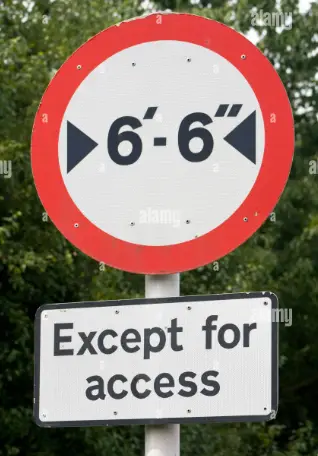
State and Federal Laws
The maximum width for a travel trailer in the United States is regulated by federal laws. According to these regulations, the maximum width for an RV in the United States is 8.5 feet (102 inches). However, some states have their own laws regarding the maximum width of an RV, which may be different from the federal regulations.
It is important to know the laws of the state you are traveling in, as violating these laws could result in fines and other penalties. Some states require oversized load permits for travel trailers that exceed their maximum width limits.
Road Restrictions
Travel trailers that exceed the maximum width limit set by federal or state laws may face restrictions on certain roads. These restrictions are in place to ensure the safety of both the driver and other motorists.
Travelers should be aware of any road restrictions in the states they are traveling through and plan their routes accordingly. Some states may have specific routes that are designated for oversized vehicles.
Campsite Restrictions
Campgrounds and RV parks may also have restrictions on the maximum width of travel trailers that they allow. This is important to consider when planning a trip, as it may limit the number of campsites that are available to you.
Some campgrounds may require that you provide proof of the maximum width of your travel trailer before making a reservation.
Always check with the campground or RV park before making a reservation to ensure that your travel trailer meets their requirements.
National Park Restrictions
National parks may also have restrictions on the maximum width of travel trailers that they allow. These restrictions are in place to protect the natural environment and ensure the safety of visitors.
Some national parks may have specific campsites designated for larger travel trailers, so check the restrictions of any national park you plan to visit before making a reservation.
Travel Trailer Models and Their Widths
Average Fifth-Wheel Trailer Width
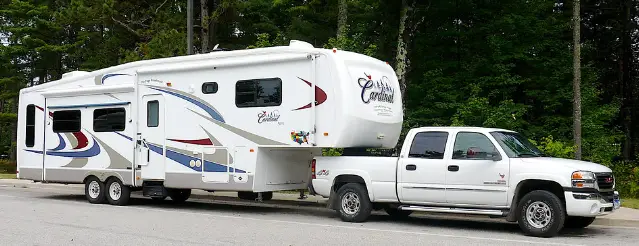
Fifth-wheel trailers are one of the larger types of travel trailers. They have a unique design that allows them to attach to the bed of a pickup truck. This design makes them more maneuverable than other types of trailers.
On average, fifth-wheel trailers are around 8.5 feet wide, which is the maximum legal width limit for travel trailers in the United States.
Here are some popular fifth wheel travel trailer models and their widths:
- Grand Design Reflection 315RLTS: 8’ W x 11’11” H x 37’11” L
- Keystone Montana: 8.5’ W x 13.75’H x 41’ L
- Dutchman Voltage: 8’ W x 13.4’ H x 38’ L
- Forest River Wildcat: 8’ W x 13.2’ H x 31’ L
- Jayco North Point: 8’ W x 13.6’ H x 38’ L
Average Gooseneck Trailer Width
Gooseneck trailers are similar to fifth-wheel trailers in that they attach to the bed of a pickup truck. However, they have a different hitch design that allows them to be more stable when towing heavy loads.
Gooseneck trailers are usually wider than fifth-wheel trailers, with an average width of around 8.5 feet.
Here are some popular fifth wheel travel trailer models and their widths:
- Sundowner Horizon: 8.5’ W x 8.5’ H x 40’ L
- Featherlite: 8.5’ W x 8.5’ H x 53’ L
- Big Tex: 8.5’ W x 8.5’ H x 35’ L
Average Toy Hauler Width
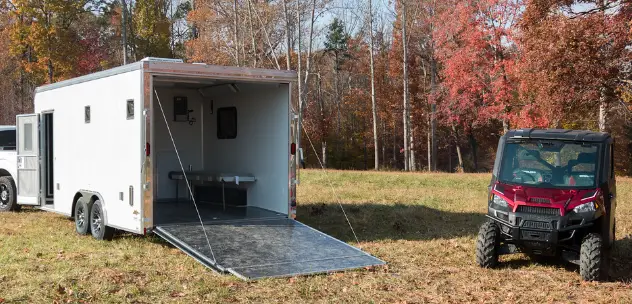
Toy haulers are travel trailers that are specifically designed to carry recreational vehicles like ATVs and dirt bikes. They have a garage area in the back of the trailer that can be used to store these vehicles.
Toy haulers are usually wider than other types of travel trailers, with an average width of around 8.5 feet.
Here are some popular fifth wheel travel trailer models and their widths:
- Keystone Fuzion: 8.5’ W x 13.6’ H x 35’ L
- Forest River XLR Nitro: 8.5’ W x 13.6’ H x 33’ L
- Jayco Talon: 8.75’ W x 13.6’ H x 44’ L
Average Camper Width
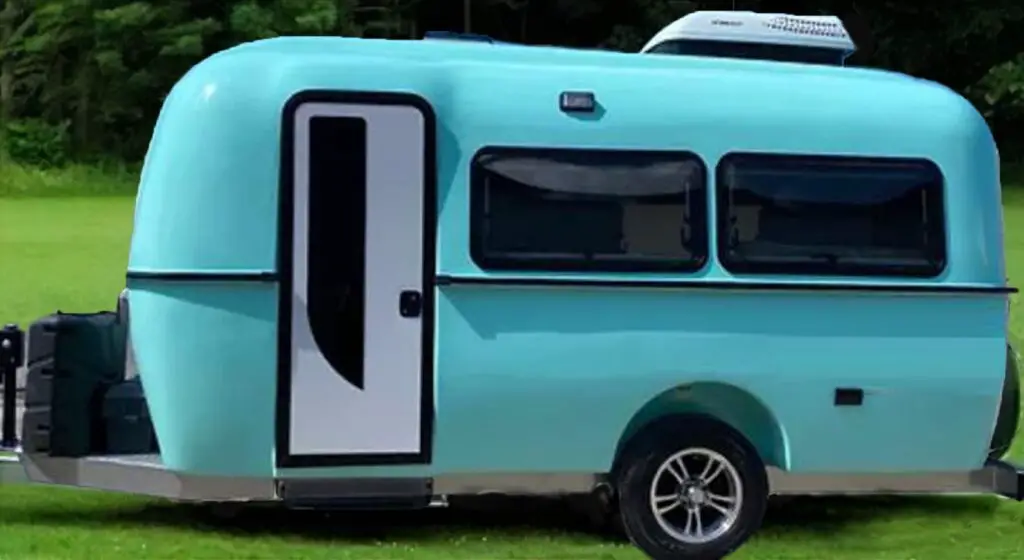
Camper trailers are smaller than other types of travel trailers and are designed to be towed by smaller vehicles like SUVs and minivans.
On average, camper trailers are around 7 feet wide, making them more maneuverable than larger trailers.
Here are some popular camper models and their widths:
- Scamp 13’ Deluxe Layout B: 6’8” W x 7.5” H x 13’ L
- Jayco Jay Flight SLX: 7’1” W x 9’5” H x 21’1” L
- KZ Sportsmen Classic 181BH: 7’ W x 9’3” H x 21.5’ L
- Keystone Sprinter Limited 34BIK: 8’4” W x 11’3” H x 38’10” L
- Flagstaff E-Pro E12SRK: 7’ W x 7’6” H x 12’ L
- Cherokee 234VFK: 8’1” W x 11’1” H x 29’ L
- Impression 25RB: 8’ W x 10’ 7” H x 29’1” L
- Rockwood Geo Pro G14FK: 6’4” W x 9’4” H x 14’1” L
Average Pop-Up Camper Width
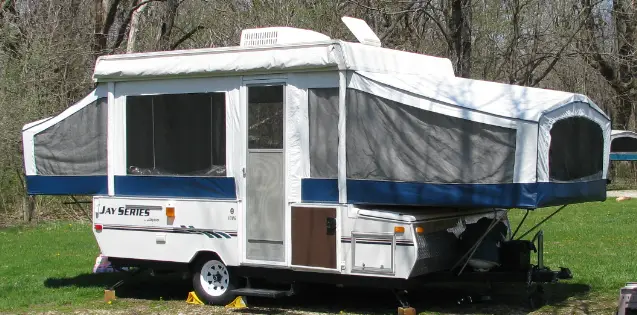
Pop-up campers are a type of camper trailer that have a unique design that allows them to be folded down for easier storage and transportation.
On average, pop-up campers are around 7 feet wide, making them easy to tow and maneuver.
Note that these measurements below vary based on whether the camper is in pull mode or is stationary and any pop-outs are fully extended.
Here are some popular pop-up camper models and their widths:
- Forest River Rockwood: 7.5’ W x 6.8’ H x 26’ L
- Coachmen Clipper: 7’ W x 6.8’ H x 21’ L
- Forest River Flagstaff: 7’ W x 6.8’ H x 12’ L
Average Teardrop Trailer Width
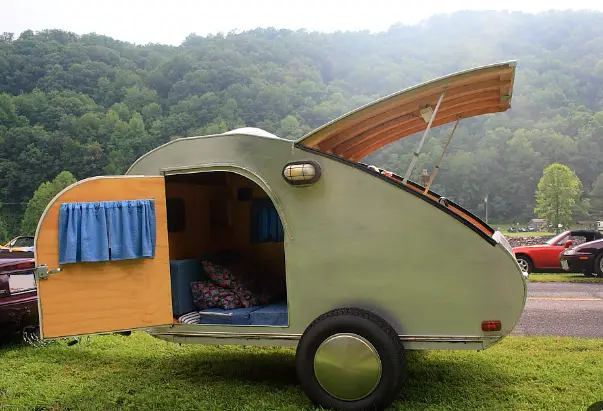
Teardrop trailers are one of the smallest types of travel trailers. They have a unique teardrop-shaped design that makes them aerodynamic and easy to tow. On average, teardrop trailers are around 6 feet wide, making them one of the most maneuverable types of trailers.
In addition to travel trailers, there are also class C and class B motorhomes that have different widths. KZ Sportsmen Classic 181BH is an example of a compact travel trailer that is around 8 feet wide. Scamp is another manufacturer that offers a range of travel trailers with different widths.
Here are some popular fifth wheel teardrop trailer models and their widths:
- TAB 320 S: 6’8” W x 7’8” H x 15’3” L
- Earth T300: 5’ W x 5’ H x 11’ L
Implications of Travel Trailer Width
When it comes to travel trailers, width is an important consideration. It affects everything from towing to storage and parking. In this section, we’ll explore the implications of travel trailer width and what you need to know.
Towing Considerations
The width of your travel trailer can impact your towing experience. A wider trailer may be more difficult to maneuver on the road, especially in tight spots. It may also be more prone to sway, which can be dangerous. Additionally, some states have laws regarding the maximum width of a trailer that can be towed without a special permit. Be sure to check your state’s regulations before hitting the road.
How Wide Are Travel Trailer Parking Spots?
Parking your travel trailer can also be affected by its width. Travel trailer parking spots average 10 to 12 feet wide and 20 to 45 feet long. Many RV parks and campgrounds have designated parking spots for trailers., but these spots can vary in size. A wider trailer may require a larger spot, which could limit your options. It’s important to research the parking options at your destination before you arrive to ensure that your trailer will fit.
Width and Interior Comfort
When it comes to travel trailers, the width is an important factor that affects the interior comfort of the vehicle. While wider trailers offer more space, they can also be more difficult to maneuver and may require special permits to transport.
Space and Amenities
Most travel trailers are between 8 and 10 feet wide, providing ample space for a comfortable interior. The additional width allows for more amenities and features, such as larger kitchens, bathrooms, and sleeping areas. However, it’s important to note that wider trailers may not fit in all campsites or RV parks.
The interior space of a travel trailer can vary depending on the specific model and design. Some trailers may have slide-out sections that increase the interior space when parked, while others may have a more compact layout to maximize efficiency.
Slide-Outs
Slide-outs are a popular feature in many travel trailers, providing additional interior space when parked. These sections can extend the width of the trailer by several feet, creating a more spacious and comfortable living area. However, it’s important to note that slide-outs can add significant weight to the trailer and may require additional maintenance.
Awnings
Awnings are another feature that can affect the interior comfort of a travel trailer. These retractable covers provide shade and protection from the elements, allowing travelers to enjoy the outdoors without being exposed to the sun or rain. Awnings can also create additional living space outside of the trailer, providing a comfortable area for relaxing or dining.

